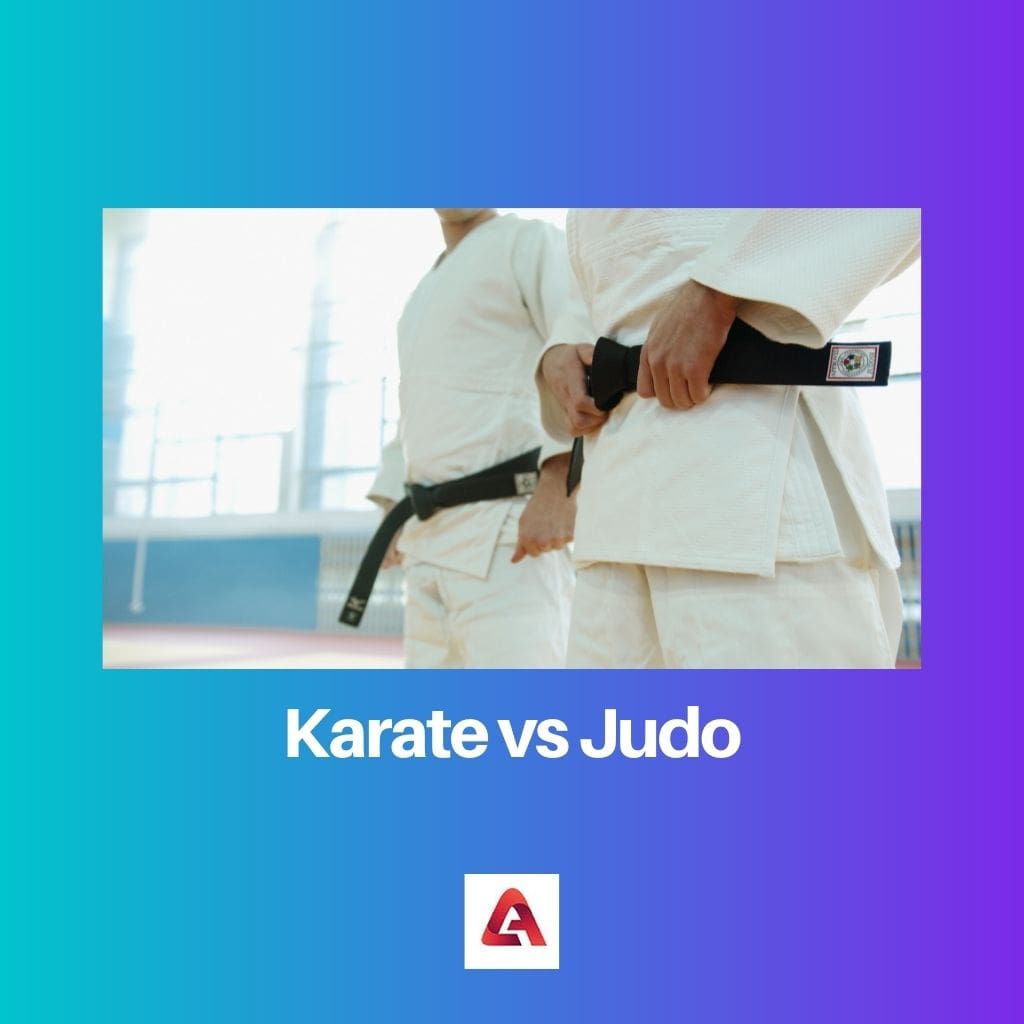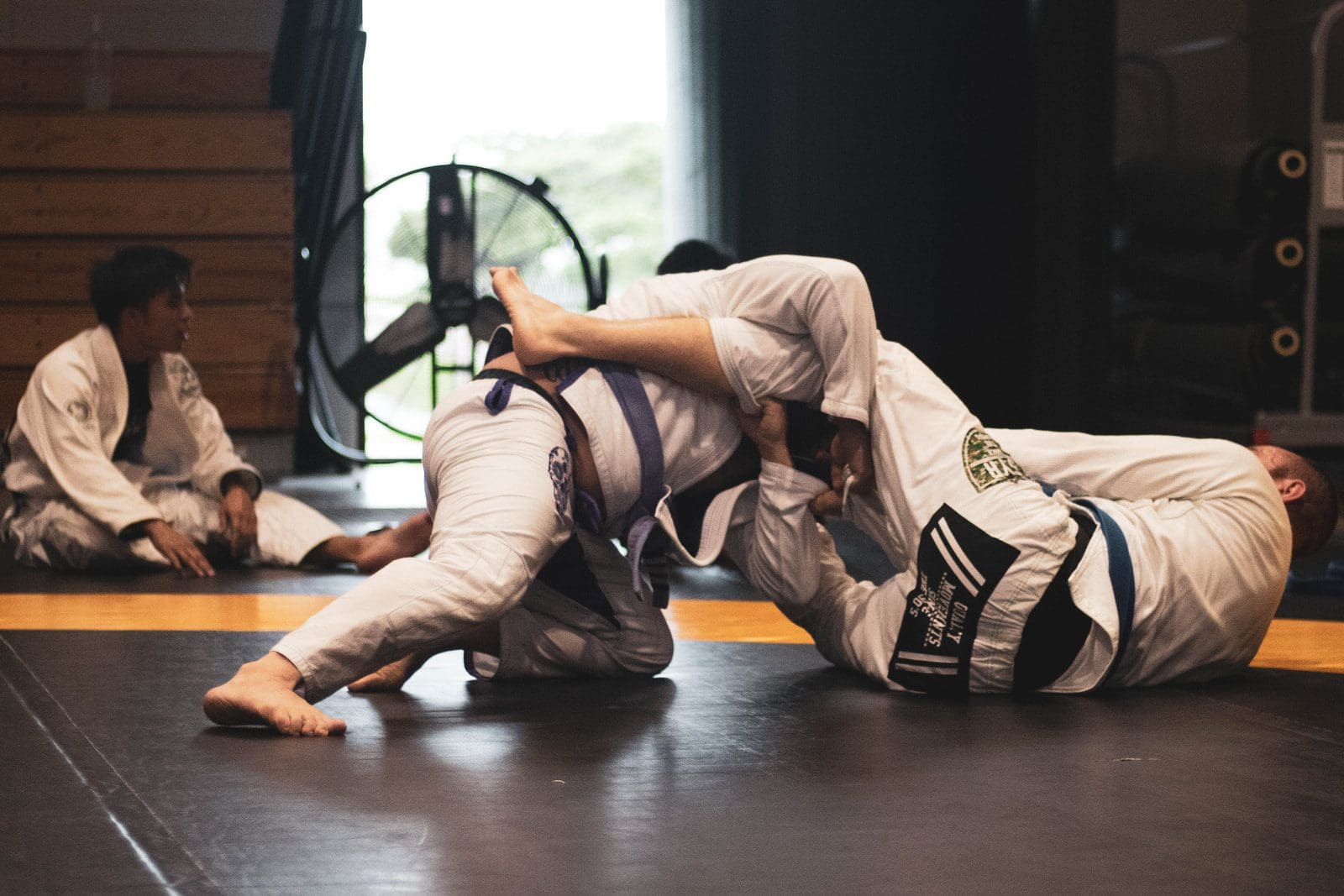Martial art refers to any fighting that requires strict practice. They are performed for various reasons, like self-defence, combat, fitness, discipline, relaxation, confidence, sport, etc.
Many martial arts exist in different countries. Any person who practices martial arts is known as a martial artist.
Karate and Judo are forms of martial arts that originated in Japan. They are not the same, but they have the same techniques.
Key Takeaways
- Karate is a Japanese martial art focused on striking techniques, such as punches, kicks, knee, and elbow strikes, emphasizing power and speed.
- Judo is another Japanese martial art focused on grappling, throws, and joint locks, emphasizing balance, leverage, and technique over brute strength.
- Karate and Judo are Japanese martial arts, but Karate concentrates on striking techniques, while Judo focuses on grappling, throws, and joint locks.
Karate vs Judo
Karate is a martial art that originates from Japan and involves striking, kicking, and defensive blocking with legs and arms. It is unarmed and uses almost all body parts. Judo is a martial art of Japanese origin that aims to take the opponent down with throwing and grappling techniques.

One of the liveliest forms of martial arts that are practised in the world today is Karate. It includes several striking techniques, such as kicks, punches, elbow strikes, knee strikes and so on.
On the other hand, Judo means ‘gentle way’. It is famous for its throwing and grappling techniques. To take down the opponent to the ground is the main objective of Judo.
Comparison Table
| Parameter of comparison | Karate | Judo |
|---|---|---|
| Type | Karate is a hard-martial art that involves striking techniques. | Judo is a soft martial art that involves throwing and grappling techniques. |
| Form | Karate is an aggressive form of martial art. | Karate is an aggressive form of martial art. |
| Points | In Karate, points are earned for punching and kicking. | In Judo, points are earned for throwing and grappling the opponent. |
| Purpose | The purpose of Karate is to thrash a man into submission. | The purpose of Judo is to trap the opponent, and it aims at tiring down the opponent. |
| Energy | In Karate, a man draws energy from the earth and is used against the opponent through assaults. | In Judo, a man draws energy from the opponent and redirects it towards the earth. |
What is Karate?
Karate is a martial art of Japanese origin. It is a term obtained from combining two words: ‘kara’ and ‘te’. Kara denotes ‘empty’, and te means ‘hand’.
When put together, i.e. karate denotes an “empty hand”.
Karate was developed in East Asia, systematized in Okinawa in the 17th century, and came to Japan in the 1920s. Japan has four main karate styles: Wado-ryu, Shito-ryu, Shotokan and Goju-ryu.
Karate is an unarmed martial art. It involves defensive blocking with legs and arms, striking and kicking. It uses almost all parts of one’s body to the most significant advantage.
Karate, however, is a direct and confrontationist approach where you boldly block the opponent’s moves and attack him vigorously with your hands and legs.
Karate can be divided into – Kihon, Kata and Kumite.
Karate has many benefits:
- It helps in improving one’s mental and physical health.
- It helps to build self-confidence and self-esteem.
- It helps to raise one’s energy level and concentration level.
- It helps one master self-defence.
- It also tones the body and helps build stamina.

What is Judo?
Judo is also a form of martial art that originated in Japan. It was evolved in 1882 in Jigoro Kano.
When Judo initially originated, it was just a sport, but later in the 20th century, it gained acknowledgement as a martial art form and an Olympic sport.
Those who practise Judo are called Judoka, and those who instruct are called Sensei. Keikogi is the traditional attire of Japan, and this is what the Judokas have to wear while performing Judo.
Judo is taught in many different countries today. It is famous for its throwing and grappling techniques. To take down the opponent to the ground is the main objective of Judo.
One uses his hands and feet to strike and thrust the opponent. One will be announced as a winner only when the opponent becomes inactive.
Judo is not just a sport. It also teaches students the way of living. Many training centres, junior and high schools, and colleges have made Judo a part of their physical education.
Benefits of Judo:
1. It helps to grow strength and flexibility.
2. It helps to improve reaction time.
3. It helps in excellent coordination.
4. It helps to build self-confidence.
5. It helps to develop physical fitness.
Apart from physical benefits, Judo also helps students to overcome fear, control their emotions and feelings, learn about the nature of the competition and build meaningful relationships with others.

Main Differences Between Karate and Judo
- Karate is a complex martial art that involves striking techniques, whereas Judo is a soft martial art that involves throwing and grappling techniques.
- The purpose of Karate is to thrash a man into submission; on the other hand, the purpose of Judo is to trap the opponent, and it aims at tiring down the opponent.
- One needs to kick his opponent in karate, whereas in Judo, one makes catches.
- Ground fighting is not a part of Karate but an important part of Judo.
- Karate is an aggressive form of martial art, whereas Karate is an aggressive form of martial art.

- https://www.ncbi.nlm.nih.gov/pmc/articles/PMC3448209/
- https://journals.sagepub.com/doi/abs/10.2466/pms.2002.94.3.1041

The article highlights the key differences between Karate and Judo effectively. I appreciate the clarity of the comparisons.
Interesting article. I learned a lot about the differences between Karate and Judo. The comparisons section was particularly informative.
Yes, I agree. It’s always interesting to learn about different forms of martial arts.
The article provides a comprehensive overview of Karate and Judo. I found it very insightful.
I’ve been practicing Judo for years, and I think the article accurately captures its essence.
I’m glad I read this article. I’ve always been interested in martial arts, and now I have a better understanding of the differences between Karate and Judo.
The author provides a clear distinction between Karate and Judo. However, the section about the development and spread of Judo felt out of place in an article comparing these martial arts.
I personally found the historical background fascinating.
I don’t mind the historical information, but I do agree it wasn’t necessary for a comparison.
The article presents a concise comparison of Karate and Judo. It’s a useful resource for anyone interested in these martial arts.
Agreed. I appreciate the depth of the comparison provided in this article.
In my opinion, the focus on the history of Karate and Judo was unnecessary in this article. A more in-depth look into the physical and mental benefits of these martial arts would be more valuable.
The article could touch on the cultural significance of Karate and Judo. Understanding the cultural contexts of these martial arts would provide more insight into their practice and philosophies.
I agree with this suggestion. It’s important to consider the cultural roots of Karate and Judo.
That’s an interesting point. It would add depth to the understanding of these martial arts.
I would have liked to see more about the development and philosophy of Karate, similar to the section about Judo.
I agree. A more balanced approach to the history of both martial arts would make the comparison more complete.
I don’t think the article does enough to highlight the benefits of Karate and Judo. The comparison is thorough, but more focus on the benefits would be helpful for beginners considering these martial arts.
The comparison table made the differences between Karate and Judo very clear. Well-structured article.